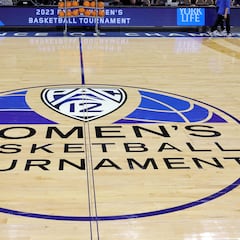How women’s soccer has evolved
Of all women’s sports, soccer is most followed across the globe, and it has been rapidly increasing in participation and viewers over the last few years.


Women’s sports are getting more popular these days, but one stands out above the rest. Women’s soccer has the highest following of any women’s sport globally (22% of the world, according to YouGov).
The 2023 FIFA Women’s World Cup, happening this summer, has more teams than ever before (32) and has sold over half a million tickets sold already. It is expected to break records for attendance and interest.
The evolution of women’s soccer
Soccer now has women’s leagues in several places throughout the world, but it wasn’t always like that. In fact, the path to getting where it is today was paved with discrimination and struggle for women. In the 1800s, there were two women credited with forming the first known organized women’s teams. Helen Graham Matthews founded a team which she called Mrs. Graham’s XI in Scotland. However, it did not last very long, as the team received harsh backlash. During their first big game, some members of the crowd ran onto the field and the game had to be called off. The club ended there. Then, in 1894, a woman known as Nettie Honeyball who was an activist for women’s rights, founded the British Ladies football club in Great Britain. They organized the first official women’s soccer game, played in front of 10,000 people.
‘Nettie Honeyball,’ founder in 1895 of the British Ladies' Football Club, the first ever women’s football team. It featured both Lady Florence Dixie & 2 mixed race sisters, Emma & Florence Clarke.
— Tom Holland (@holland_tom) March 6, 2021
‘Nettie Honeyball’s real identity remains, apparently, unclear. pic.twitter.com/48otmOBWM0
It was groundbreaking at the time, but the women’s team suffered harsh criticism for playing a “man’s game”. Unfortunately, they also suffered from violence and it became dangerous to play at all. That, plus the lack of funding forced the women to eventually stop playing.
Around 20 years later, however, when World War I began and many men in England went off to fight, the men’s leagues were canceled and the women formed leagues of their own, some even using the games to raise money for the soldiers. In 1920, one game attracted around 53,000 people, the biggest ever turnout for a women’s game up to that point.
See also: Women in charge, International Women’s Day feature
A token of remembrance; best quotes by women on International Women’s Day
The FA bans women’s soccer for 50 years
Unfortunately, just as women’s soccer was making progress, the Football Association of England banned it altogether in 1921. They said soccer was “unsuitable for females and should not be encouraged”. It would be 50 years before women returned to play soccer officially. The FA did not recognize women’s soccer as an official sport until 1971. That year, the first National Cup for Women was held in England, and they called it the Mitre Challenge Trophy. Today, it’s called the Women’s FA Cup.
Meanwhile, in the United States, women formed unorganized soccer teams to play games throughout the first half of the 1900s, but they did not last long and some were banned as well. It wasn’t until the late 1970s that women’s soccer really took off in the U.S., partly due to the passing of Title IX in 1972, which mandating gender equity in education. The women’s national team was formed in 1985, the first official women’s league wasn’t established until 1995, and only made its debut in 2001.
In 1970, the Women’s International Football Federation was formed in Italy, though it still was not recognized officially by FIFA. Later that year though, the first unofficial Women’s World Cup was held in Italy. The next year, a second unofficial Women’s World Cup was celebrated in Mexico, and a game between Denmark and Mexico sold a record 110,000 tickets.
Women’s soccer makes a comeback
In 1980, FIFA finally officially recognized women’s soccer. It was another 11 years before the first official women’s tournament took place. But that 1991 World Cup in China was a huge breakthrough for women’s soccer, especially in the U.S. There were 12 teams who participated and the U.S. women’s national team won the tournament. In 1996, the International Olympic Committee included women’s soccer in the Games for the first time. Women’s soccer was really put on the map in 1999, when the USWNT won the World Cup again and the image of Brandi Chastain on her knees holding her jersey after scoring the winning penalty kick became infamous in women’s soccer. That World Cup paved the way for the future of women’s soccer in the U.S. They have now won a total of four World Cups, the most successful women’s national team in history.

In the last few years, there have been huge strides made in the progress of women’s soccer. In 2019, the USWNT took charge of the gender pay gap and fought to get equal pay. They filed a lawsuit against the US Soccer Federation, arguing that they should get paid the same as the men, especially considering they generate a lot more revenue than the US men’s national team does. In 2022, the U.S. Soccer Federation reached a deal to pay the men and women’s team the same, eliminating the pay gap completely and agreeing to equal prize money for the World Cup. England, Brazil, and Canada have also since said they will pay men and women equally. There is still a long way to go, but this was a huge step.
🚨🚨Canada's Women's National Team has reached an equal pay agreement with Canada Soccer after threatening to strike last month. pic.twitter.com/iVJ5vQIY1g
— Women's International Champions Cup (@iccwomen) March 6, 2023
In 2022, FC Barcelona decided to hold the women’s Champions League quarterfinal game at their own Camp Nou stadium, the largest stadium in Europe, in hopes of selling it out. They set the world record for attendance, not only for a women’s soccer game at that stadium, but for any soccer game in Europe that season with 91,533 fans at Camp Nou, making headlines around the whole world. They then broke their own record again at the same stadium just the next month, with 91,648 people watching Barcelona win their semifinal against Wolfsburg.
The future of women’s soccer
Now, there are around twenty-nine million women and young girls playing soccer across the world, and that number will continue to grow. There are now 176 national teams and several women’s professional leagues.
Women’s soccer leagues around the world:
- England – 12 teams (Women’s Super League)
- Spain – 16 teams (Primera Division)
- France – 12 teams (D1 Arkema)
- Germany – 12 teams (FLYERALARM Frauen-Bundesliga)
- Sweden – 12 teams (Damallsvenskan)
- Norway – 10 teams (Toppserien)
- Japan – 12 teams (WE League)
- Australia – 9 teams(A-League Women)
Viewership has increased more than any other women’s sport. In the U.S., the National Women’s Soccer League broke viewership records in 2021 by nearly 300%. In the UK, the Women’s Super League is set to go up by 350% viewership annually this year. The Women’s World Cup is one of the biggest influencers in helping promote women’s soccer. In 2019, the World Cup in France had over 1.12 billion viewers, making it the most watched women’s sporting event throughout the world.
Related stories
The more interest in women’s soccer, the more investment it will receive financially, which will allow it to continue growing. Support from the media and sponsors plus the efforts from the players, managers, and social activists have all allowed women’s soccer the freedom to finally develop into a valued, respected, and appreciated sport.
In 2023, the Women’s World Cup will take place in July in Australia and New Zealand and more records are expected to be broken. Women’s soccer has gone from being seen as “unsuitable for females” and suffering a 50-year setback, to one of the leading sports in the world, and it’s only just getting started.



